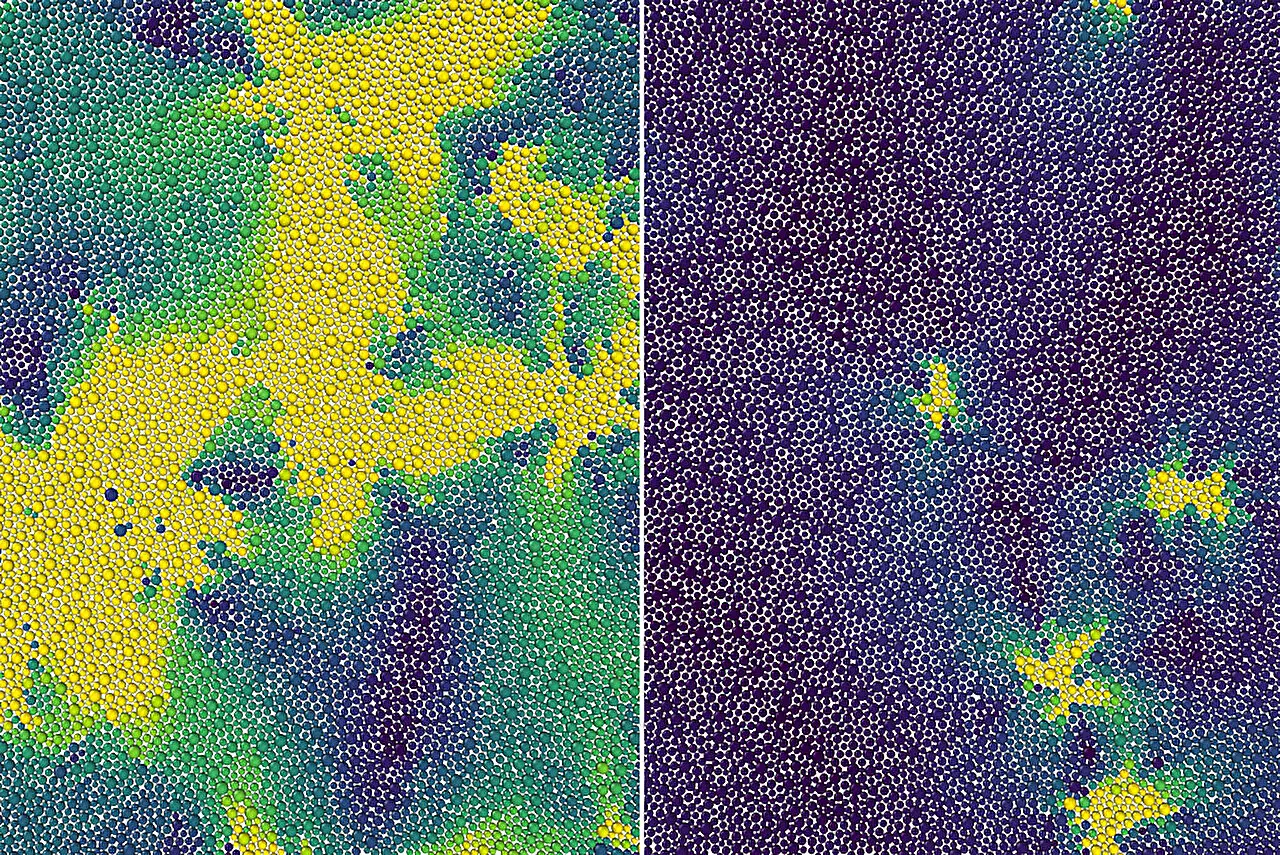Amorphous materials, such as plastic and glass, are widely used in our daily lives. Unlike crystalline solids, these materials do not form stacked crystals when cooled, but instead maintain a supercooled liquid state that flows very slowly. Despite their ubiquity, the mechanisms underlying the rigidity of these materials at the microscopic level have remained a mystery. However, scientists at the Lawrence Berkeley National Laboratory have made a breakthrough discovery that sheds light on this hidden phase transition between a liquid and a solid.
Using a combination of theory, computer simulations, and previous experiments, the researchers have proposed an explanation for why the molecules in supercooled liquids, when cooled, remain disordered like a liquid until they reach a specific temperature called the onset temperature. At this temperature, the supercooled liquid becomes so viscous that the molecules barely move, effectively transitioning into a solid-like state. This onset of rigidity represents a previously unknown phase transition, which distinguishes supercooled liquids from normal liquids.
In their proposed theory, the scientists treated the localized particle movements, known as excitations, in a 2D supercooled liquid as defects in a crystalline solid. They propose that as the temperature of the supercooled liquid increases to the onset temperature, the bound pairs of defects break apart into unbounded pairs. This act of unbinding the defects at the onset temperature causes the system to lose its rigidity and behave like a normal liquid.
The onset temperature for glassy dynamics, as discovered by the researchers, acts as a melting temperature for supercooled liquids, transforming them into regular liquids. This finding has broad implications for all supercooled liquids or glassy systems. The theory and simulations developed in this study also account for other key properties of glassy dynamics, including the observation that only a few particles move while the rest of the liquid remains frozen over short periods of time.
While this study focused on 2D systems, the researchers are confident in their ability to extend their model to 3D systems. Additionally, they plan to investigate how localized motions lead to nearby excitations, ultimately resulting in the relaxation of the entire liquid. By incorporating these additional components, the researchers aim to establish a comprehensive microscopic understanding of how glassy dynamics emerge, aligning with state-of-the-art observations.
The improved understanding of supercooled liquids provided by this study has significant implications for materials development. By gaining insights into the molecular behavior of amorphous materials, researchers can potentially develop new materials for various applications, including medical devices, drug delivery systems, and additive manufacturing. By leveraging the unique rigidity and flow properties of supercooled liquids, scientists can design innovative solutions that address complex challenges in these fields.
Beyond practical applications, exploring the dynamics of supercooled liquids offers a fascinating avenue for scientific inquiry. The distinct behavior of these liquids compared to regular liquids challenges our fundamental understanding of materials and their phase transitions. By examining the microscopic mechanisms of supercooled liquids, scientists can expand our knowledge of the interplay between the liquid and solid states, pushing the boundaries of what we know about the fundamental properties of matter.
The discovery of a hidden phase transition between a liquid and a solid in supercooled liquids opens up new possibilities for materials development and advances our understanding of the behavior of amorphous materials. By elucidating the molecular behavior at play, scientists can leverage this knowledge to create novel materials and enhance existing ones. Moreover, the study of supercooled liquids pushes the boundaries of our scientific knowledge and challenges our understanding of materials and their properties.


Leave a Reply